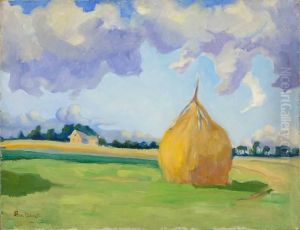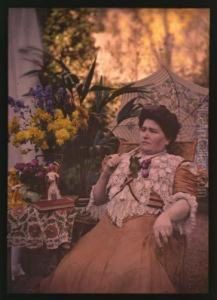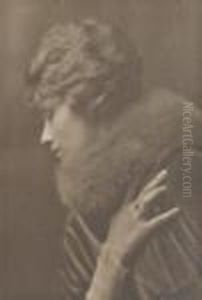Arnold Genthe Paintings
Arnold Genthe was a German-born American photographer, best known for his early 20th-century photographs of San Francisco's Chinatown, the 1906 San Francisco earthquake, and portraits of famous figures of his time.
Born in Berlin, Germany, on January 8, 1869, Genthe was originally educated as a classical philologist and earned a Ph.D. in this field. However, his interest in photography, which he had taken up as a hobby, became a full-time pursuit after he emigrated to the United States in 1895. He settled in San Francisco and quickly became enamored with the city's Chinatown, where he began taking some of his most notable works. Genthe's Chinatown photographs are particularly significant for their candid and unposed nature, a departure from the more formal style of photography at the time. He achieved this by carrying his camera in a handbag with a secret opening, allowing him to take pictures without drawing attention.
The 1906 San Francisco earthquake and fires were a pivotal moment in Genthe's career. He captured some of the most enduring images of the disaster, which showcased both the extensive damage and the resilience of the city's inhabitants. These photographs would later be compiled into publications and exhibitions, cementing his reputation as a skilled documentarian.
Genthe's talents also extended to portrait photography, and his studio became a sought-after destination for many famous individuals, including politicians, actors, and writers. His circle of subjects included such luminaries as Jack London, Anna Pavlova, and Theodore Roosevelt. His portraits were known for their artistic quality and the ability to capture the essence of the sitter, a skill that made him one of the most prominent portrait photographers of his time.
In the latter part of his career, Genthe shifted his focus to landscapes and travel photography. He traveled extensively, capturing scenes from the American South, Europe, Asia, and the Middle East. His later work was characterized by a pictorialist approach, with a focus on composition, light, and atmosphere that was influenced by his background in painting and art history.
Arnold Genthe continued to work until his death on August 9, 1942, in New York City. His legacy includes a vast collection of photographs that provide a window into the early 20th century and have been preserved in numerous archives and institutions. His work is not only a valuable historical record but also a testament to his skill and versatility as a photographer.


